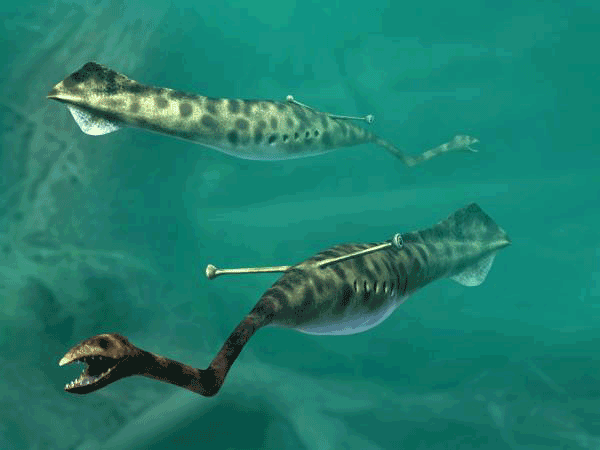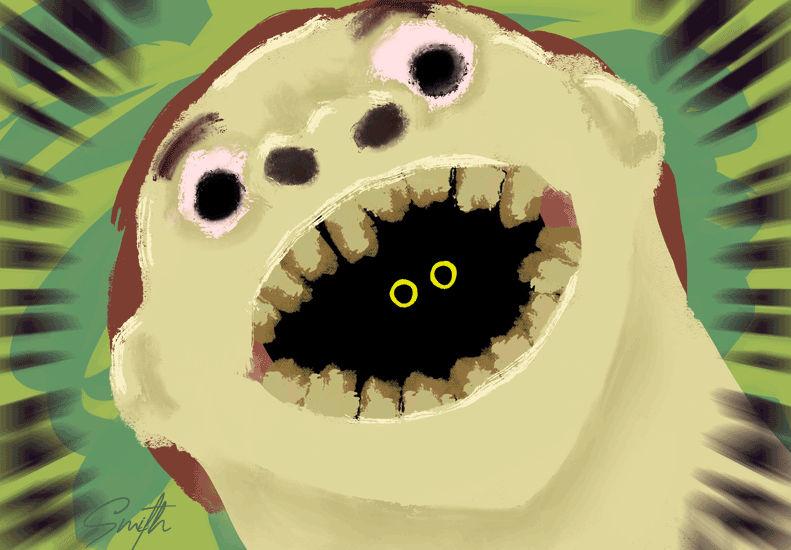One day in 1955, an amateur fossil hunter by the name of Francis Tully made an amazing discovery. From a bed of coal deposits at Mazon Creek, Illinois, came a fossil so unusual it would spark a 65 year debate that is still ongoing.

Tully's Common Monster
Named for its discoverer and known as "The Tully Monster", "Tullimonstrum gregarium" (Latin for Tully's Common Monster), or even "Tully's Monster", this mysterious creature has captured the interest of scientists and laypersons the world over. Tully monster fossils have only been found in Illinois, and it has become the state fossil as a result.
"The fossil was studied by palaeontologists at the Chicago Field Museum and, with more specimens having been recovered from the same location, the first formal description of this marine animal was published in 1966. Since then, it has been described as a nektonic mollusc, an Arthropod, a marine worm and even a conodont (a jawless chordate, possibly related to primitive, jawless fish). Thousands of specimens have been collected from the Mazon Creek beds, but this fossil has not been recorded anywhere else in the world." - Everything Dinosaur Web Log
What did Tullimonstrum look like?
Wikipedia describes Tullimonstrum as a little animal that reached a maximum length of 35 cm (3.1 inches). Most remarkable were its stalk eyes and its elongated mouth or "proboscis", making it seem very alienlike. It possibly had fins near its tail for swimming, but this is difficult to determine from the fossil evidence. The Tully monster diet was quite simple. With its 8 or so little teeth it could chew up whatever small creatures it could find crawling around in the mud at the bottom of the estuaries where it lived.

What is The Tully Monster mystery?
In 2016, some researchers had reached a consensus that the Tully monster was indeed a vertebrate and perhaps a fish, related to lampreys, This was picked up by the media and relayed to the public as settling the mystery of how the Tully monster should be classified once and for all. However, that couldn't be farther from the truth. Put simply, Tullimonstrum is difficult to classify.
“This animal doesn't fit easy classification because it’s so weird,” said [Lauren] Sallan, an assistant professor in the Department of Earth and Environmental Science of Penn's School of Arts & Sciences. “It has these eyes that are on stalks and it has this pincer at the end of a long proboscis and there's even disagreement about which way is up. But the last thing that the Tully monster could be is a fish.” - Penn Today
Sallan and her colleagues argued in a paper they published in 2017 that the evidence provided for the Tully monster's vertebrate status was flawed. They believe that the researchers of the 2016 paper misidentified body parts preserved in the fossils and that this led to a false classification of Tullimonstrum. Also, the team pointed out that lampreys look nothing like the Tully monster.

A new study from researchers at University College Cork reinforces the invertebrate claim. This study from 2019 focused on the eyes of modern animals and on the eyes in the fossils of the Tully monster. They looked at the zinc to copper ratio in the eyes of modern vertebrates and invertebrates (such as squid, octopuses, and cuttlefish). Then they looked at the zinc to copper ratio in the eyes of the fossils of Tullimonstrum.
[T]he researchers...examined the eyes of the Tully fossil itself. The zinc to copper ratio was found to be more similar to that of invertebrates, challenging the previous conclusion that Tully was a vertebrate. - EarthSky
However, it is worth mentioning that the copper in the fossils of Tullimonstrum was unlike the copper found in the other animals. It looks like nature created a truly unique creature in the Tully monster, and created a mystery that humans still have to unlock.
Notes:
Images in this post are used in accordance with creative commons license CC BY-SA.
"Tullimonstrum". Wikipedia. October 6, 2021. https://en.wikipedia.org/wiki/Tullimonstrum
"'Tully Monster' Riddle Solved". Everything Dinosaur Web Log. March 16, 2016. https://blog.everythingdinosaur.co.uk/blog/_archives/2016/03/16/tully-monster-riddle-solved.html
"What are conodonts?". Australian Museum. Sydney, Australia. Updated July 16, 2020.: https://australian.museum/learn/australia-over-time/fossils/what-are-conodonts/
"‘Tully Monster’ Mystery Is Far From Solved, Penn-led Group Argues". Penn Today. Philadelphia, PA. February 20, 2017.: https://penntoday.upenn.edu/news/tully-monster-mystery-far-solved-penn-led-group-argues
"Bizarre Tully Monster fossil is still a mystery". EarthSky. November 24, 2019.: https://earthsky.org/earth/tully-monster-mystery-fossil-invertebrate-vertebrate/









